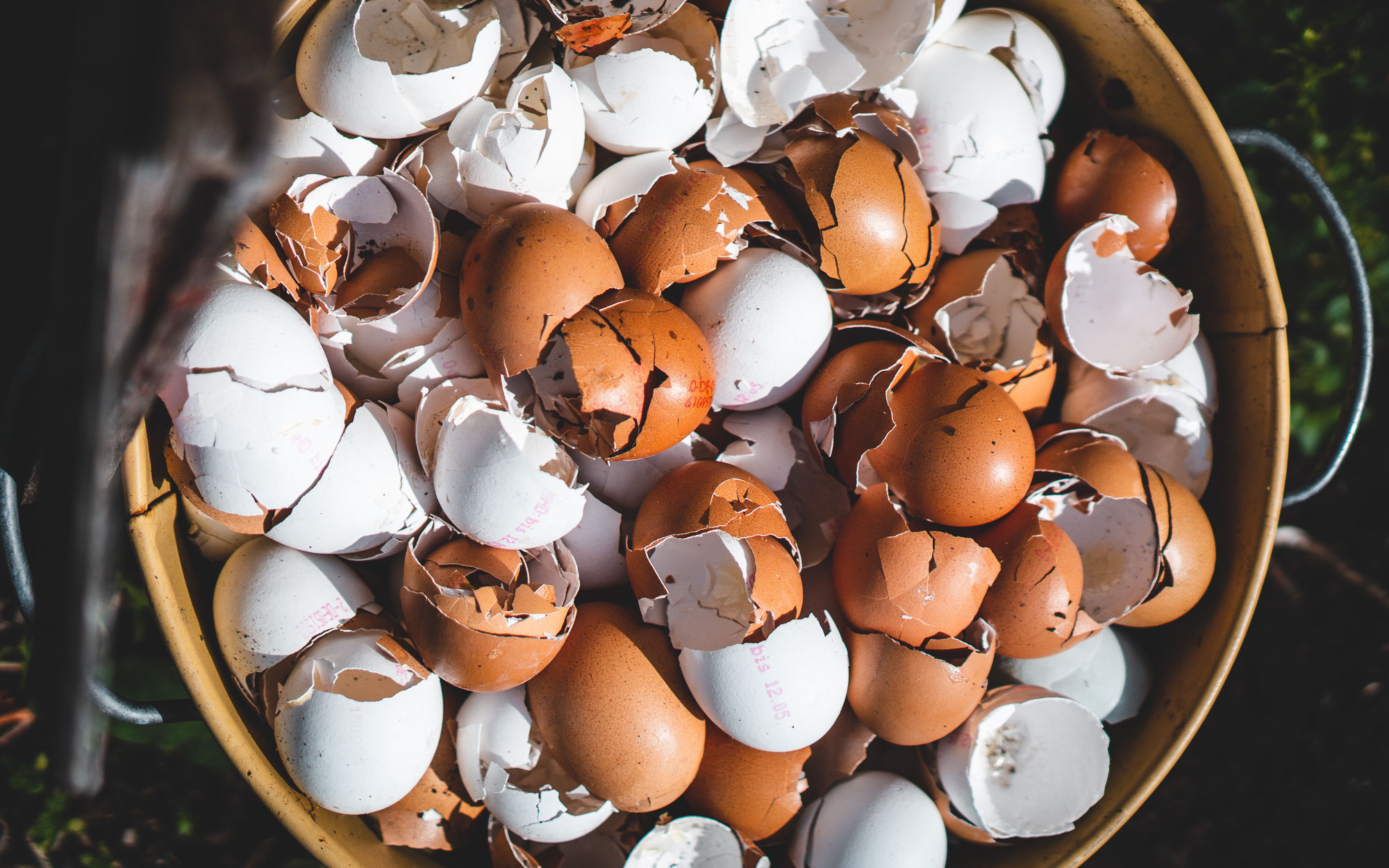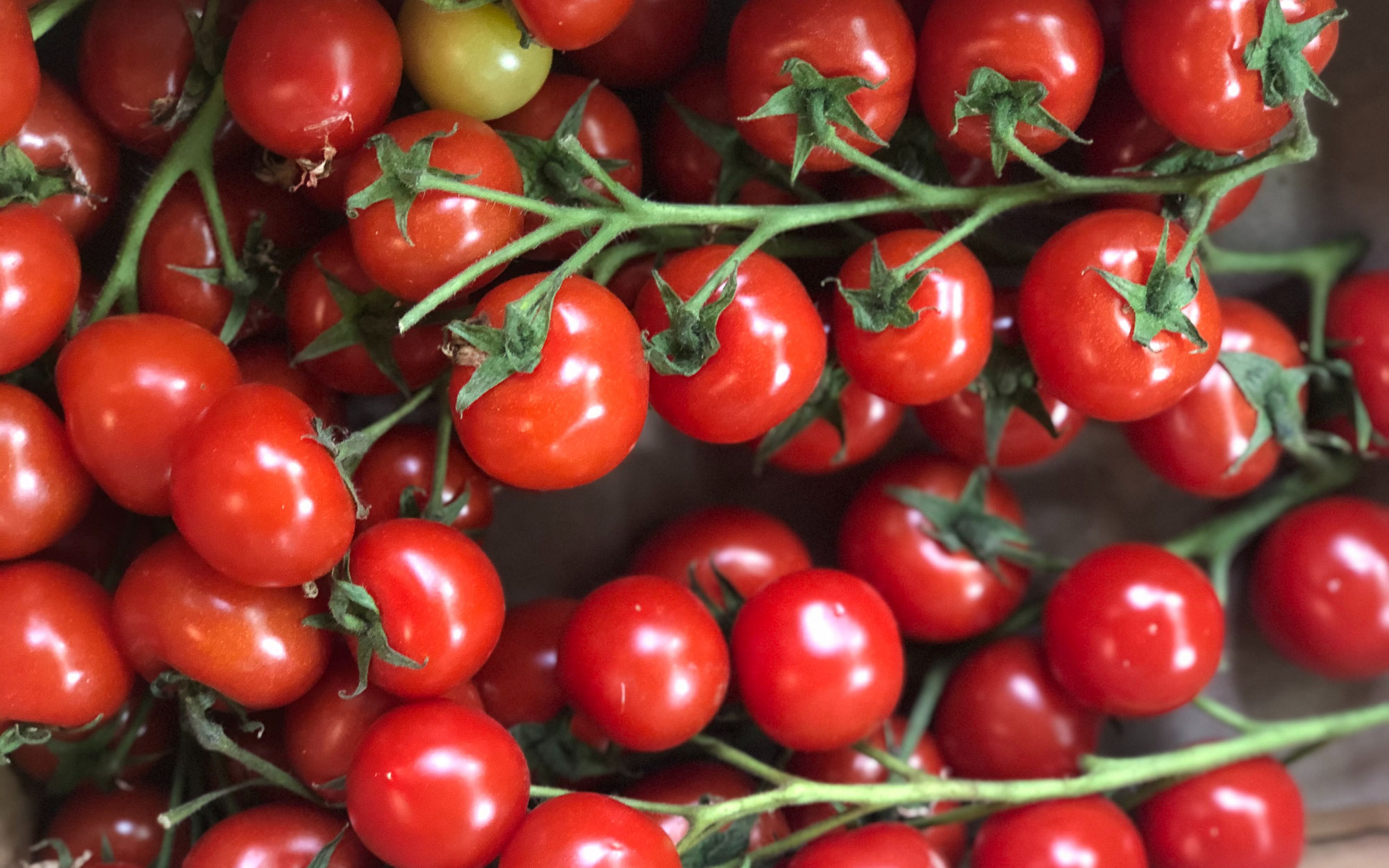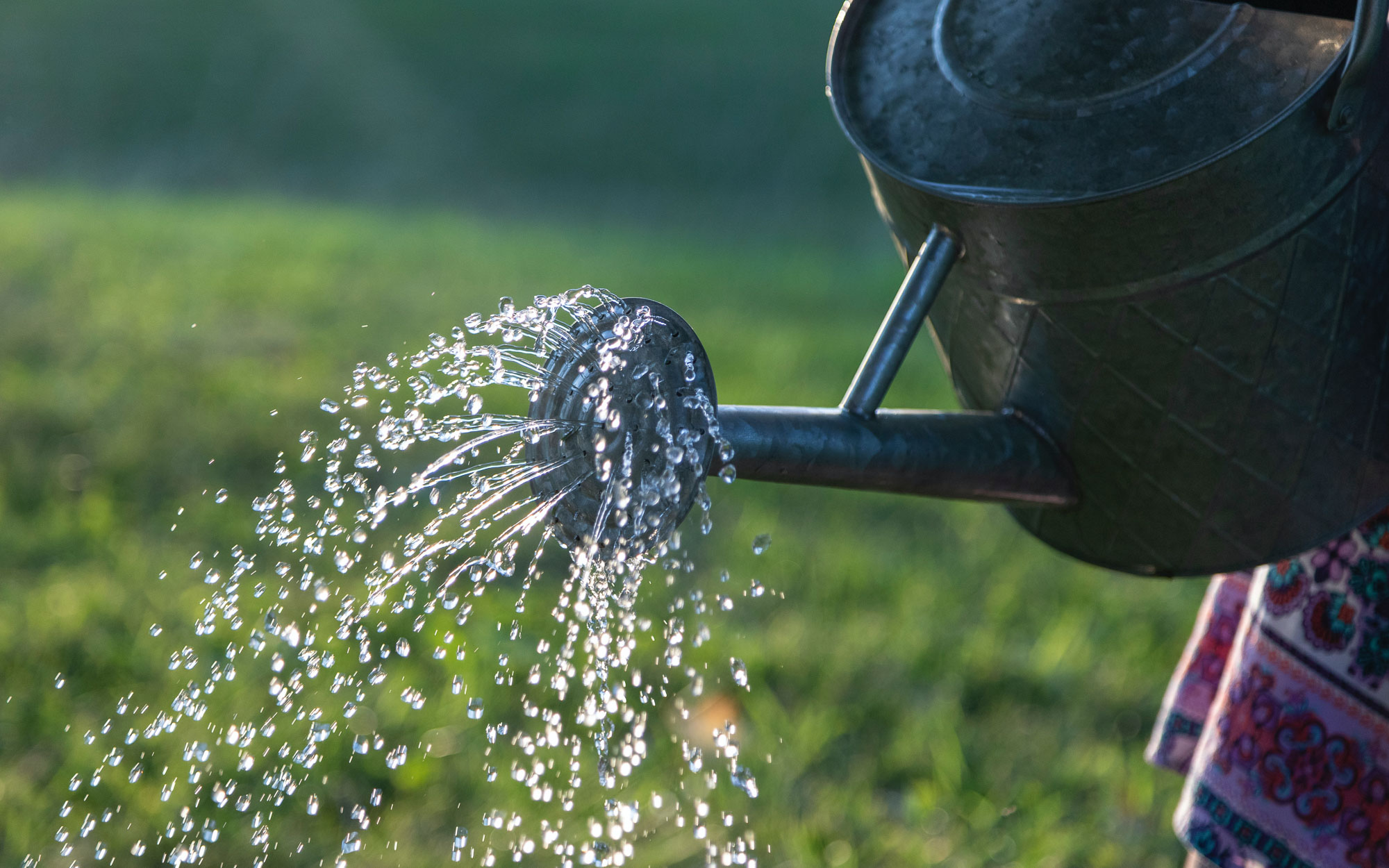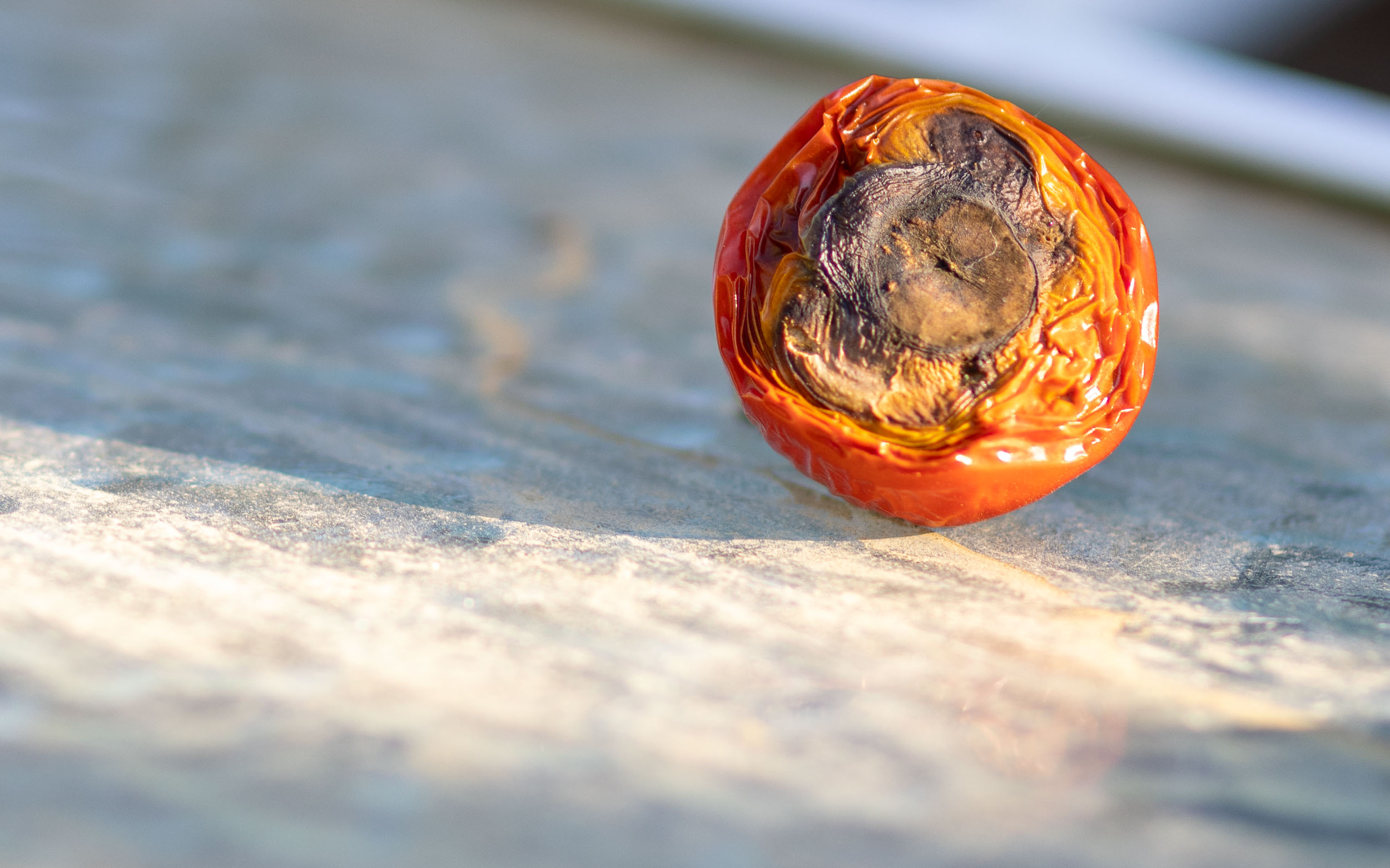Let’s talk about blossom end rot. Specifically, tomato blossom end rot. Yay! Cell death and puddles of necrotic rot in the fruit we work so hard to grow may not be the loveliest topic in gardening, but it’s actually a surprisingly interesting and dynamic one.
This article’s goal is to address some outdated information and provide you with enough knowledge on the causes and cures of tomato blossom end rot to construct an effective plan based on the real conditions in your garden.
And reassure you that if you’re dealing with BER it’s probably not the end of the world… and maybe not even your fault!
What Blossom End Rot… IS NOT
It would be reasonable to find a tomato with BER and conclude that the rotted, blackened, mushy globe on your plant must be infected with a horrible bacterial infection. Or perhaps a virus spread on the wings of some pesky pest. Or even a fungal infection.
Reasonable conclusions, but not actually correct. Blossom end rot is not a communicable disease like tomato blights or leaf curl virus. You don’t need to worry about it spreading to your other plants. In fact, it’s not even a tomato-specific condition.
What is Blossom End Rot?
Blossom End Rot (BER) is a physiological condition typified by necrotic lesions formed on the bottom, or the blossom end, of young fruits in the nightshade family (and sometimes even cucumbers!). The lesions are created by the tomato cell walls weakening, failing, eventually dying and the subsequently released fluids pooling into the extracellular space.
Cool. And gross.
Causes of Blossom End Rot
 BER is often talked about as a calcium disease. And there’s certainly some merit to that. For a long time, it was observed that blossom end rot was the result of too little calcium in the soil and subsequently too little calcium available to the plant and the young, forming tomato fruits. Basically, researchers found that fruits with BER were lower in calcium.
BER is often talked about as a calcium disease. And there’s certainly some merit to that. For a long time, it was observed that blossom end rot was the result of too little calcium in the soil and subsequently too little calcium available to the plant and the young, forming tomato fruits. Basically, researchers found that fruits with BER were lower in calcium.
And that observation right there is why the vast majority of tomato BER treatment guides incorrectly focus on drowning your plants and soil in supplemental calcium. From antacids to eggshells to milk, you’ve probably seen this advice before.
But calcium deficiency was not the full story. See, it was later noted by researchers and commercial growers that even plants with plenty of available soil calcium… still sometimes form these lesions. And from there, our understanding of BER evolved to be more about the plant’s ability to uptake calcium, often due to poor watering.
Some experiments provided solid evidence to this idea that BER is a failure to absorb calcium. Researchers seemed able to significantly reduce the incidence of BER by directly spraying dissolved calcium mixtures onto the plant’s fruits.
For a long time, this is where I thought the story ended. That is until I came home from vacation one day to a whole mess of tomato plants displaying BER.
What I discovered is that BER actually presents even in plants with high levels of calcium directly observed in their tissues. Which raises the question: is calcium really even the driving factor or at play at all?
And in fact, a more recent review of the available studies concluded “that the low available calcium in the fruits was caused by the Blossom End Rot” and not the other way around. Fruits that were tracked throughout their development were found to have similar calcium levels regardless of whether they went on to develop BER or not!
So does low calcium availability cause blossom end rot or does blossom end rot cause low calcium levels? It actually seems like current research is pointing towards the latter. More importantly, the mechanisms of nutrient uptake in plants are complex and blossom end rot does not seem, at least to me, to be a fully understood disease.
But don’t worry, even if it’s not as simple as adding crushed eggshells around our plants, there are still effective tools at our disposal when it comes to actually managing BER in our gardens.
And that’s because all this research showed that avoiding and treating BER comes down to doing three things:
- Remove environmental stressors (high temperature, salinity, etc.)
- Avoid massive growth spurts (particularly after slow growth)
- Remove early fruits with BER to allow the plant to focus on later, healthy tomatoes
By the way, if you’d like a more visual reference to all the information in this article, we also recorded a video guide you can check out here:
A note on calcium sprays
Although I mentioned that calcium chloride fruit sprays were found to be successful on BER in at least one experiment, I would not recommend employing calcium chloride fruit sprays. I’m just not sure it’s actually a practical solution for most of us as it requires continually spraying the right formulation, at the right concentration, directly onto the young fruit before they’ve developed BER. Hard to recommend when I don’t think it would be a good fit for my garden any time soon.
Let me just quote the University of New Hampshire’s fact sheet on BER “Some researchers have reported that the application of calcium sprays directly to developing fruit can reduce the incidence of BER (Ho and White, 2005), but many others have reported that they did not reduce BER and were labor-intensive to apply, and in some cases reduced marketable yields. To be effective, they need to be applied directly to the young fruits (not to foliage) before the development of BER symptoms and would need to be applied continuously throughout fruit development. Several commercial calcium products exist for this purpose, and on-farm experimentation may be worthwhile. At this point, we don’t have enough evidence to recommend their use in managing BER.”
So with that in mind, let’s focus on how we can set the stage to beat BER both before and after our tomato plants are in the ground.
How to Avoid Blossom End Rot - Pre-Planting Strategies
 A lot of our strategy when setting up our plants for little or no BER is about treating them just the way they want to be treated. But if that sounds too nebulous to you, there are a couple ways to short-circuit the whole process.
A lot of our strategy when setting up our plants for little or no BER is about treating them just the way they want to be treated. But if that sounds too nebulous to you, there are a couple ways to short-circuit the whole process.
- First off, you can avoid tomato varieties that are more likely to develop BER. Broadly speaking, plum and pear shaped tomatoes and paste type varieties are the most vulnerable. Romas and San Marzanos are frequent victims. Some paste varieties are specifically bred to have low incidences of BER.
- Another option is simply planting cherry tomatoes, which are very rarely impacted by BER. That’s reason 372 that cherry tomatoes are the absolute best!
How to prepare your plant’s environment ahead of transplant to minimize BER risks
- The first things to think about are soil pH and salinity. Tomatoes like a moderately acidic medium to grow in and an imbalance to either the basic or very acidic side can result in BER. Similarly, high salt content like that in my native soil can stress the plant and cause BER. Next year, I need to be even more aggressive in diluting our salty soil with compost. Soil salinity is not talked about very often in home gardening, but it matters a lot in this case.
- Very heavy soils are also conducive to BER because they both drown the roots and inhibit strong root growth. Looser, loamier soils are less likely to cause BER. Even though native ground soil can be challenging, BER is still less likely to pop up in plants grown in the ground vs. a container. For some gardeners, BER is really a container phenomenon.
- Select a spot in the ground to grow where water does not drain away too fast or pool around the plant’s roots, where the plant will receive enough sun in the late Spring to put on growth but not too much in mid-summer. Too much or too little light, heat, or water are important stressors for BER.
- If you grow in containers, a larger pot with a higher capacity to retain moisture is a better bet. And when you’re selecting a soil mix for containers, make sure that it has significant quantities of both moisture retention ingredients like sphagnum peat moss or coco coir as well as drainage ingredients like perlite. In other words, a higher quality mix is less likely to result in BER.
- Finally, you can try to really dial in your seed starting and transplant timing. If you plant too early, the roots will be cold and the leaves do not receive adequate light to grow. And that stress is followed by lots of warmth and light, which is more stressful- a good recipe for BER. The flipside is planting too late when the plant gets too much light without a real canopy of foliage, which, you guessed it, also can lead to BER…
Ok that’s all great for planning out next year, but what can we do now if our tomatoes do start exhibiting signs of BER!?
How to Reverse Blossom End Rot - Post-Planting Strategies
 Once a fruit has developed BER, there’s unfortunately no way to reverse course in that fruit. But there are things we can do to help that same plant start growing healthy tomatoes.
Once a fruit has developed BER, there’s unfortunately no way to reverse course in that fruit. But there are things we can do to help that same plant start growing healthy tomatoes.
- The best thing you can do is simply wait. It’s extremely common for BER to impact the first flush of fruits and then naturally disappear as the plant matures. This is actually one of the reasons it’s so hard to verify whether traditional remedies are effective; many of those plants that stopped producing fruit with BER after receiving a calcium infusion would have done so anyway.
- Even better, go ahead and prune off any fruits that exhibit signs of BER so that the plant can put energy and nutrients on future trellises instead.
- When it comes to feeding, we want to avoid adding too much nitrogen and forcing the plant to go into growth overdrive - that period of sudden unsustainable growth is a major BER risk factor. Instead, maintain a reasonable fertilizer schedule using an appropriate, organic tomato or veggie fertilizer. I made an in-depth video on tomato feeding if you’d like a reference.
- Finally, and most importantly, (seriously this is the big one): water regularly and consistently to keep your soil evenly moist, avoiding periods of dry soil followed by soggy roots. This can be achieved by deep watering for longer periods less frequently and is easier if your plants are on automated irrigation. The challenge is to determine whether you’re over or under watering so keep an eye on your soil when you notice BER and make adjustments. If you live somewhere with heavy rains in the summer, you’ll need to ensure the tomato area has drains well or has good runoff. Big bursts of water are a really easy way to induce BER.
Blossom End Rot Conclusions
You know, this whole BER thing is a partially understood issue with complex causes. I’m positive we’ll learn more about it and in a year I’ll need to add or edit this information. But for now, I recommend checking out these great resources for further reading:
- https://ucanr.edu/sites/SFA/files/294667.pdf
- https://extension.unh.edu/resource/growing-vegetables-managing-blossom-end-rot-fact-sheet-0
- https://www.ncbi.nlm.nih.gov/pmc/articles/PMC6835971/
- https://www.gardenmyths.com/blossom-end-rot/
- https://www.ncbi.nlm.nih.gov/pmc/articles/PMC4246855/
- https://www.researchgate.net/publication/283964417_Reduction_of_calcium_deficiency_symptoms_by_exogenous_application_of_calcium_chloride_solutions
And hey, let’s try not to get beat up about it. BER happens but tomatoes are prolific plants and we’ll all be enjoying plenty of fresh tomatoes in no time.
As always, happy gardening!
